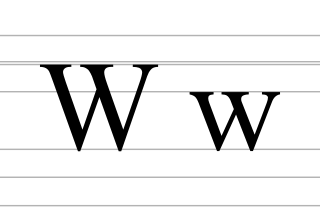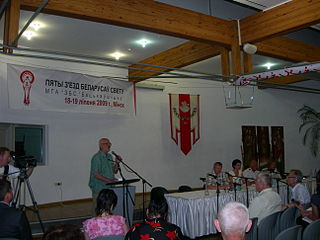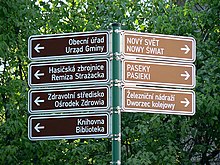
The Czech Republic, also known as Czechia, is a landlocked country in Central Europe. Historically known as Bohemia, it is bordered by Austria to the south, Germany to the west, Poland to the northeast, and Slovakia to the southeast. The Czech Republic has a hilly landscape that covers an area of 78,871 square kilometers (30,452 sq mi) with a mostly temperate continental and oceanic climate. The capital and largest city is Prague; other major cities and urban areas include Brno, Ostrava, Plzeň and Liberec.

Russian is an East Slavic language, spoken primarily in Russia. It is the native language of the Russians and belongs to the Indo-European language family. It is one of four living East Slavic languages, and is also a part of the larger Balto-Slavic languages. It was the de facto and de jure official language of the former Soviet Union. Russian has remained an official language in independent Russia, Belarus, Kazakhstan, Kyrgyzstan, and Tajikistan, and is still commonly used as a lingua franca in Ukraine, Moldova, the Caucasus, Central Asia, and to a lesser extent in the Baltic states and Israel.

Vietnamese is an Austroasiatic language spoken primarily in Vietnam where it is the national and official language. Vietnamese is spoken natively by around 85 million people, several times as many as the rest of the Austroasiatic family combined. It is the native language of the Vietnamese (Kinh) people, as well as a second or first language for other ethnic groups in Vietnam.

W, or w, is the twenty-third letter of the Latin alphabet, used in the modern English alphabet, the alphabets of other western European languages and others worldwide. Its name in English is double-u, plural double-ues.

Demographic features of the population of the Czech Republic include population density, ethnicity, education level, health of the populace, economic status, and religious affiliations.
An official language is a language having certain rights to be used in defined situations. These rights can be created in written form or by historic usage.

The European Union (EU) has 24 official languages, of which three – English, French and German – have the higher status of "procedural" languages of the European Commission. Irish previously had the lower status of "treaty language" before being upgraded to an official and working language in 2007. However, a temporary derogation was enforced until 1 January 2022. The three procedural languages are those used in the day-to-day workings of the institutions of the EU. The designation of Irish as a "treaty language" meant that only the treaties of the European Union were translated into Irish, whereas Legal Acts of the European Union adopted under the treaties did not have to be. Luxembourgish and Turkish, which have official status in Luxembourg and Cyprus, respectively, are the only two official languages of EU member states that are not official languages of the EU. In 2023, the Spanish government requested that its co-official languages Catalan, Basque, and Galician be added to the official languages of the EU.
A minority language is a language spoken by a minority of the population of a territory. Such people are termed linguistic minorities or language minorities. With a total number of 196 sovereign states recognized internationally and an estimated number of roughly 5,000 to 7,000 languages spoken worldwide, the vast majority of languages are minority languages in every country in which they are spoken. Some minority languages are simultaneously also official languages, such as Irish in Ireland or the numerous indigenous languages of Bolivia. Likewise, some national languages are often considered minority languages, insofar as they are the national language of a stateless nation.
A medium of instruction is a language used in teaching. It may or may not be the official language of the country or territory. If the first language of students is different from the official language, it may be used as the medium of instruction for part or all of schooling. Bilingual education or multilingual education may involve the use of more than one language of instruction. UNESCO considers that "providing education in a child's mother tongue is indeed a critical issue". In post-secondary, university and special education settings, content may often be taught in a language that is not spoken in the students' homes. This is referred to as content based learning or content and language integrated learning (CLIL). In situations where the medium of instruction of academic disciplines is English when it is not the students' first language, the phenomenon is referred to as English-medium instruction (EMI).
A multinational state or a multinational union is a sovereign entity that comprises two or more nations or states. This contrasts with a nation state, where a single nation accounts for the bulk of the population. Depending on the definition of "nation", a multinational state is usually multicultural or multilingual, and is geographically composed of more than one country, such as the countries of the United Kingdom.
A national language is a language that has some connection—de facto or de jure—with a nation. The term is applied quite differently in various contexts. One or more languages spoken as first languages in the territory of a country may be referred to informally or designated in legislation as national languages of the country. National languages are mentioned in over 150 world constitutions.
Russia, as the largest country in the world, has great ethnic diversity, is a multinational state, and is home to over 190 ethnic groups nationwide. According to the population census at the end of 2021, more than 147.1 million people lived in Russia, which is 4.3 million more than in the 2010 census, or 3.03%. At the same time, only 130.587 million census participants indicated their nationality. The top ten largest nations besides Russians included in descending order: Tatars, Chechens, Bashkirs, Chuvash, Avars, Armenians, Ukrainians, Dargins and Kazakhs. Population censuses in Russia allow citizens to report their nationality according not only to their ancestry, but also to self-identification. The 83 federal subjects which together constitute the Russian Federation include:

Vietnamese people in the Czech Republic, including citizens and non-citizens, are the third-largest ethnic minority in the country overall, numbering more than 83,000 people according to the 2011 census.
After centuries of relative ethnic diversity, the population of modern Poland has become nearly completely ethnically homogeneous Polish as a result of altered borders and the Nazi German and Soviet or Polish Communist campaigns of genocide, expulsion and deportation during and after World War II. Ethnic minorities remain in Poland, however, including some newly arrived or increased in number. Ethnic groups include Germans, Ukrainians and Belarusians.

The Belarusian diaspora refers to emigrants from the territory of Belarus as well as to their descendants.
The languages of Poland include Polish – the language of the indigenous population – and those of immigrants and their descendants. Polish is the only official language recognized by the country's constitution and the majority of the country's population speak it as a native language or use it for home communication. Deaf communities in Poland use Polish Sign Language, which belongs to the German family of Sign Languages.
This article describes ethnic minorities in Czechoslovakia from 1918 until 1992.
The various regional and minority languages in Europe encompass four categories:








